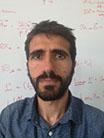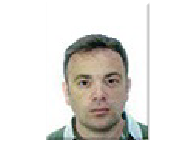
Iran First International Combustion School (ICS2019)
Politecnico di Milano, Italy
Combustion Modelling
Day 1
Lesson 1: Governing equations, thermodynamics, kinetics, and transport properties (~1.5 h)
• Presentation of the course, learning objectives, organization
• Transport equations
- Continuity and momentum equations
- Conservation of species; diffusion fluxes (Stefan-Maxwell theory, Fick diffusion, Soret effect)
- Energy equation: enthalpy and temperature formulations
• Basics of thermodynamics, kinetics, and transport properties
- Enthalpy and specific heats, NASA polynomial formalism
- Kinetic parameters, reaction rate, reversible reactions, equilibrium constant, examples of kinetic mechanisms in CHEMKIN format, pressure-dependent reactions (third-body, fall-off reaction, Chebyshev formalism, PLOG formalism)
- Kinetic theory of gases (viscosity, mass diffusion coefficients, thermal conductivity, Lewis number)
• Introduction to the CHEMKIN formalism
Lesson 2: Numerical algorithms for reactive flows (~2 h)
• Introduction: complexity of reacting flows and combustion
- Detailed kinetics and combustion
- Non-linearity, coupling, stiffness
• The 0D reacting system model
- Governing equations
- Numerical solution of ODE systems
- The Jacobian matrix and the sparsity of kinetic mechanisms
• Ideal reacting systems in combustion
- Batch Reactor
- Shock Tube Reactor
- Perfectly Stirred Reactor
- Plug Flow Reactor
Day 2
Lessons 3: Numerical methods for 1D and multi-dimensional flames (~2 h)
• Introduction: Combustion and transport phenomena & laminar flames
• Numerical solution of 1D flames
- Premixed laminar flames
- Burner stabilized unstretched (or flat) flame
- Governing equations and modeling aspects
- Numerical solution
- Freely-propagating unstretched (or flat) flame
- Governing equations and modeling aspects
- Counterflow diffusion flames
- Governing equations and modeling aspects
• Multidimensional flames
- Introduction and examples
- Governing equations
- Numerical algorithms for multidimensional flames
- The operator-splitting method
Lesson 4: Advanced techniques for reacting flows with detailed kinetics (~1.5 h)
• Acceleration of simulations by reduction of specie
- Skeletal reduction
- Quasi Steady-State Approximation (QSSA)
- Dynamic Stiffness Removal (DSR)
- Dynamic Adaptive Chemistry (DAC)
• Acceleration of simulation by reduction of reacting environments
- Reaction Network Analysis (RNA) and Kinetic Post-Processor (KPP)
- Dynamic Adaptive Clustering
- ISAT (In Situ Adaptive Tabulation)
• Species bundling for diffusion coefficient reduction
• Computation Cost Minimization
• Numerical tools for analysis of kinetic mechanisms
- Sensitivity Analysis
- Rate of Production and Reaction Path Analyses
Day 3
Lessons 5 and 6: Turbulent combustion (~3.5 h)
• Turbulent flows
- Introduction to modeling of turbulent flows (statistical description, Reynolds'/Favre's averaging, mean flow equations, Kolmogorov's theory)
- Mean flow equations (short introduction)
- Scalar transport equations
- Interactions between turbulence and chemistry: the need of closure models
• Premixed turbulent flames
- Turbulent burning velocity
- Bray-Moss-Libby (BML) Model
- Eddy-Break-Up (EBU) Model
- Level Set Approach / G-equation
• Non-premixed turbulent flames
- Conserved scalar based models
- Flamelet Model
- Finite-rate models: EBU, ED, ED/FR, EDC
University of Naples Federico II, Italy
Combustion Fundamentals
DAY 1
1. Introduction Lecture 1 - 24/08/2019 (1.5 h)
a. Definition and relevance of Combustion Science. Applications.
b. Governing equations of multi-component chemically-reacting gas mixtures
c. Thermodynamics, transport, flame temperature and equilibrium
2. Homogeneous Combustion – AutoIgnition Lecture 2 - 24/08/2019 (2 h)
a. Chain-branching and Thermal Explosions, H2/O2 System
b. Auto-ignition. CH4/O2 system.
c. Stratified AutoIgnition. Dilution effects.
d. Back-Mixed Ignition. Steady and Unsteady conditions.
e. Heat loss effects. High molecular weight paraffin systems nC7H16, iC8H18
DAY 2
3. Combustion with Flame Propagation Lecture 3 - 25/08/2019 (1.5 h)
a. One Dimensional Steady Flow formulation.
b. Rayleigh and Rankine-Hugoniot equations.
c. Detonation.
d. Deflagration. Thermal theory. Flame Speed Dependencies.
4. Laminar Diffusion Flames (2 h) Lecture 4 - 25/08/2019 (2 h)
a. Flame Structure and Mixture Fraction.
b. Infinitely fast chemistry. Flamelet concept.
c. 1D Steady Diffusion flames. Strained/Unstrained.
d. 1D Unsteady Diffusion flames. Strained/Unstrained.
e. Diluted conditions. Diffusion Ignition processes.
DAY 3
5. Complex Flame Structures Lecture 5 - 26/08/2019 (1.5 h)
a. Partially-premixed flames
b. The Structure of Triple Flames
c. Stabilization, propagation and instability of tribrachial triple flames
6. Turbulence, Mixing and Aerodynamics Lecture 6 - 26/08/2019 (2 h)
a. Characteristics and Description of Turbulent Flows
b. Turbulent Premixed Combustion. Scales and Dimensionless Quantities.
c. Borghi Diagram
d. Flame stabilization, Ignition and Extinction
e. Flashback and Blowoff
f. Swirl and reverse flows
Prof. Sorrentino 2019 lectures notes:
© 2019 Iran Combustion School

















